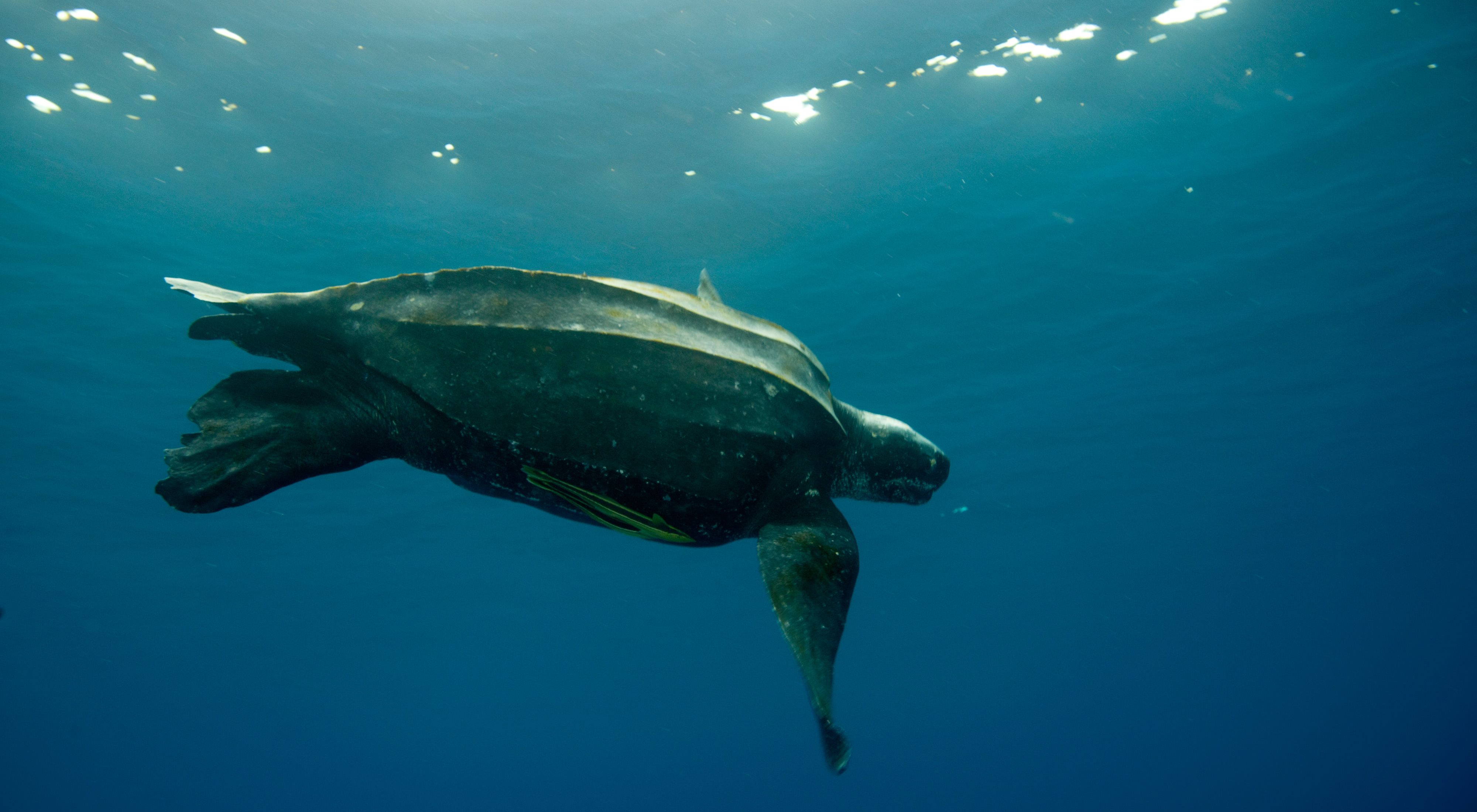Meet the Leatherback Sea Turtle
The leatherback sea turtle is the largest and fastest turtle on earth. It also:
Bears the heaviest clutches of eggs
Migrates the greatest distances
Is the world’s fastest growing reptile
Can weigh, as an adult, as much as 1,300 pounds
Can dive as deep as a whale, around 4,000 feet
Is one of the widest ranging vertebrates, ranging from Newfoundland to Norway, from New Zealand to Argentina and South Africa.
The most distinctive features of the leatherback are its lack of scales, claws and horny shell. Unlike other sea turtles, the leatherback’s shell resembles hard rubber, which is advantageous in deep dives because it compresses, rather than shattering. Unsuited to hunt much prey with its weak, scissor-like jaws, the turtle feeds primarily on jellyfish, which it stores and wrings of water in its extremely long esophagus. This diet fuels amazingly fast growth, 7 to 13 years to adult size.
Protecting the Leatherback Sea Turtle
Sadly, the leatherback sea turtle leads other sea turtles in another category: the race to extinction. The IUCN lists the leatherback as Critically Endangered, the Pacific and Indian Ocean populations in particular danger. The main threats facing the species are:
beach erosion
coastal development
egg harvesting
accidental entanglement in fishing equipment
The Conservancy is partnering extensively with governments, local organizations and businesses around the world to help conserve leatherback turtles. For example, TNC is working with the U.S. Fish and Wildlife Service in the U.S. Virgin Islands to help protect turtles at Sandy Point.
In Florida, the Conservancy’s Blowing Rocks Preserve is a popular breeding ground for many species of sea turtles, including leatherbacks. A team of Conservancy staff work from March to October—nesting season—to ensure safe passage for hatchlings to return to the sea. Over the years, the program has successfully aided in the rescue and release of hundreds of turtles.
